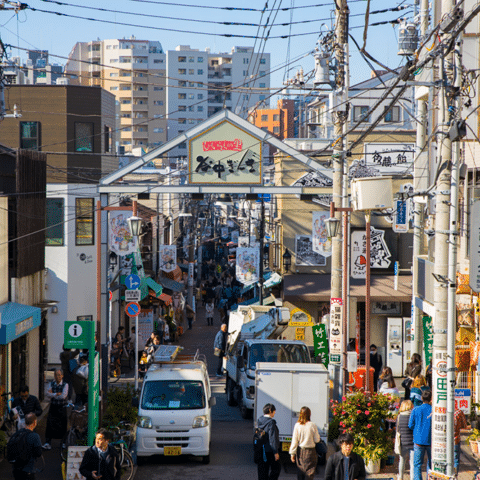
Traditional Japanese sweets known as ‘wagashi’ tend to have meaning, history, and seasons they are associated with. If you go to a traditional wagashi shop in the spring and then go again in the summer, the wagashi they have on display will have changed. There are also specific wagashi associated with certain traditions and specific days of the year. So sometimes the featured wagashi will change week to week, or even day to day depending on what’s being celebrated. The following three types of wagashi all pop up in traditional stores in spring.

Uguisu Mochi
Uguisu mochi consists of sweetened azuki bean paste wrapped in pillowy mochi and rolled in light green kinako powder (made from roasted soybeans). The sweetness of the bean paste pairs well with the nuttiness of the kinako. Uguisu mochi is named after a small, brown and green, rather innocuous bird called the ‘uguisu’ (Japanese nightingale). Uguisu are known for their beautiful singing which heralds the beginning of spring. Uguisu mochi has a long history. It is said that the famous Toyotomi Hideyoshi, one of the most powerful men in Japan during the Warring States Period who is known as the ‘unifier of Japan’, gave uguisu mochi its name in the 1500s. This was when his younger brother had it served at a tea ceremony that Toyotomi attended.

Hanami Dango
Hanami dango consist of one pink, one white, and one green ball of mochi served on a skewer. They are also known as ‘sanshoku dango’ which translates to ‘three-color dango’. They have a chewy texture with a slightly sticky surface and a mild sweet flavor. Compared to some other wagashi, they have quite a simple flavor with no sweet bean paste or sauce. This means that they pair well with a variety of other food and drinks. They are available year-round but are particularly associated with the spring hanami (flower viewing) season in Japan. People spread picnic blankets under sakura (cherry blossom) trees and sit, drink, eat, and gaze at the gently blooming cherry blossoms.
Although hanami will be a rather subdued affair this year, there’s no reason why you can’t enjoy hanami dango at home! If you don’t live in Japan or an area where you can buy hanami dango, it’s not too difficult to make your own as there are plenty of recipes online.

Yomogi Mochi
When I first came to Japan and asked my friend what ‘yomogi’ is, they translated it as ‘grass’. When I asked about it further they confirmed that it is indeed made from the type of grass that grows in lawns. However, it is not. To be fair, yomogi mochi sometimes goes by the name ‘kusamochi’ which does translate to ‘grass mochi’. Upon looking it up, I found that yomogi is known as mugwort in English. Mugwort is a herb that I had mainly associated with potions and tinctures in fantasy novels, as I had never come across it in real life. Due to the yomogi, the outer layer of mochi is a deep green, which is wrapped around sweet bean paste. The mochi has a mild, earthy flavor which is offset by the gentle sweetness of the bean paste. You can find it year-round, but yomogi itself is harvested from around March to May when the flavor is the strongest and is the most vibrant, deep green.




